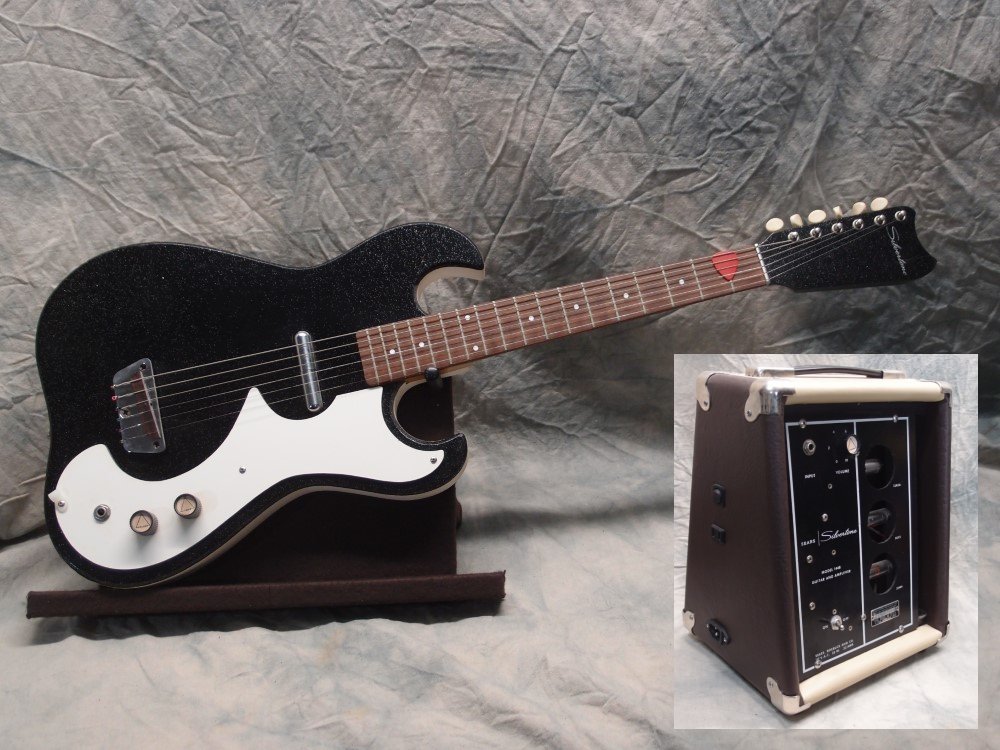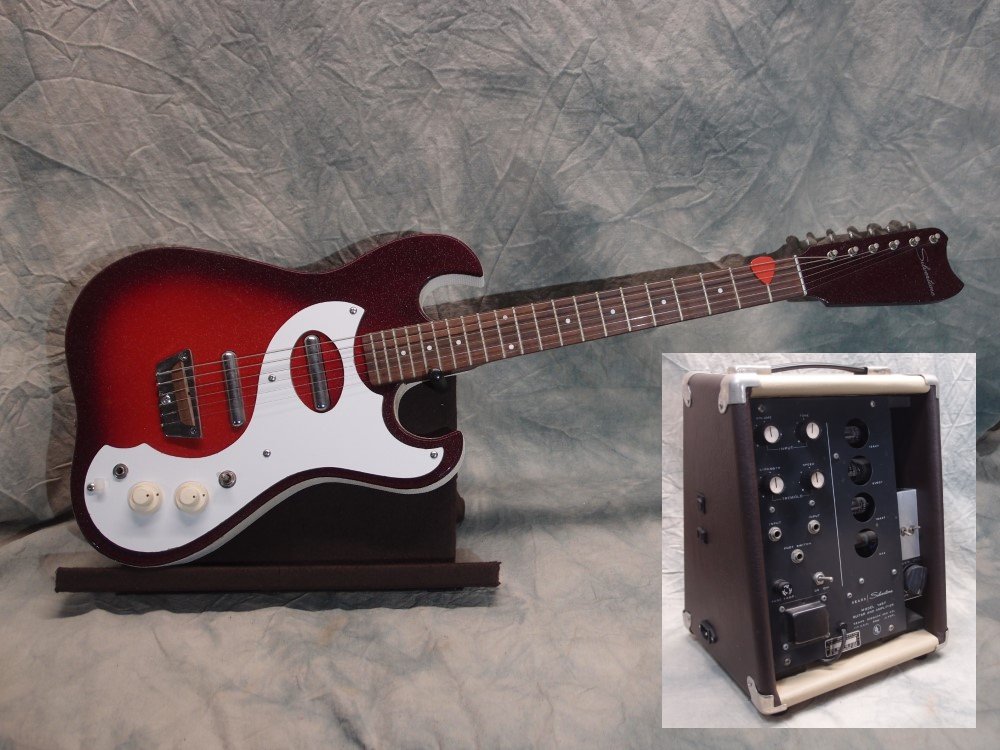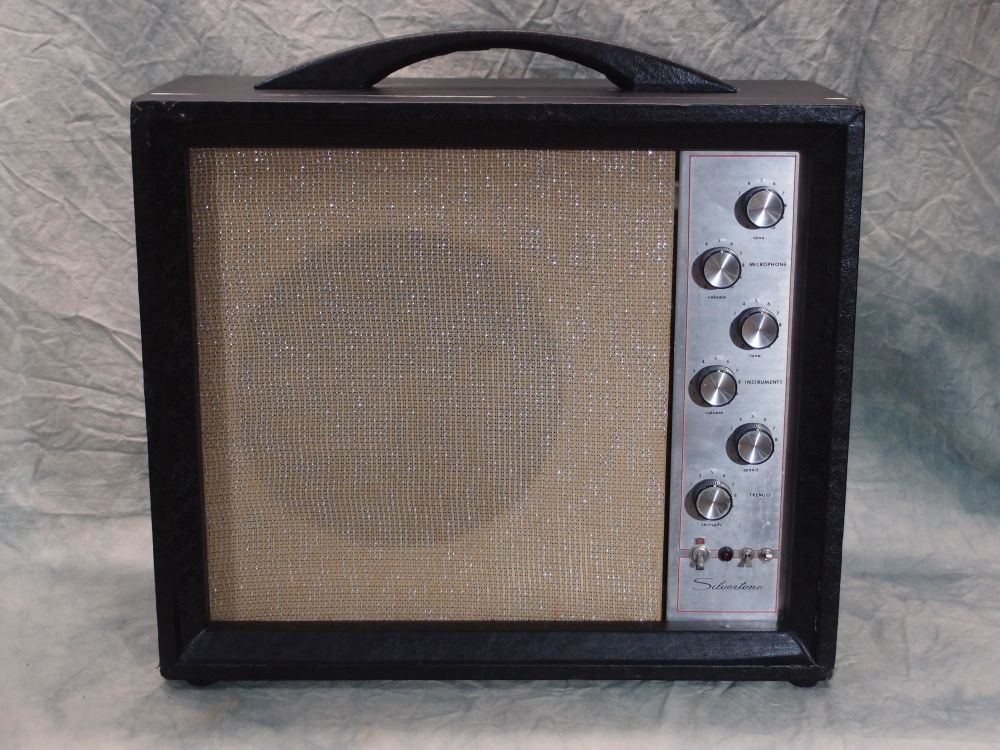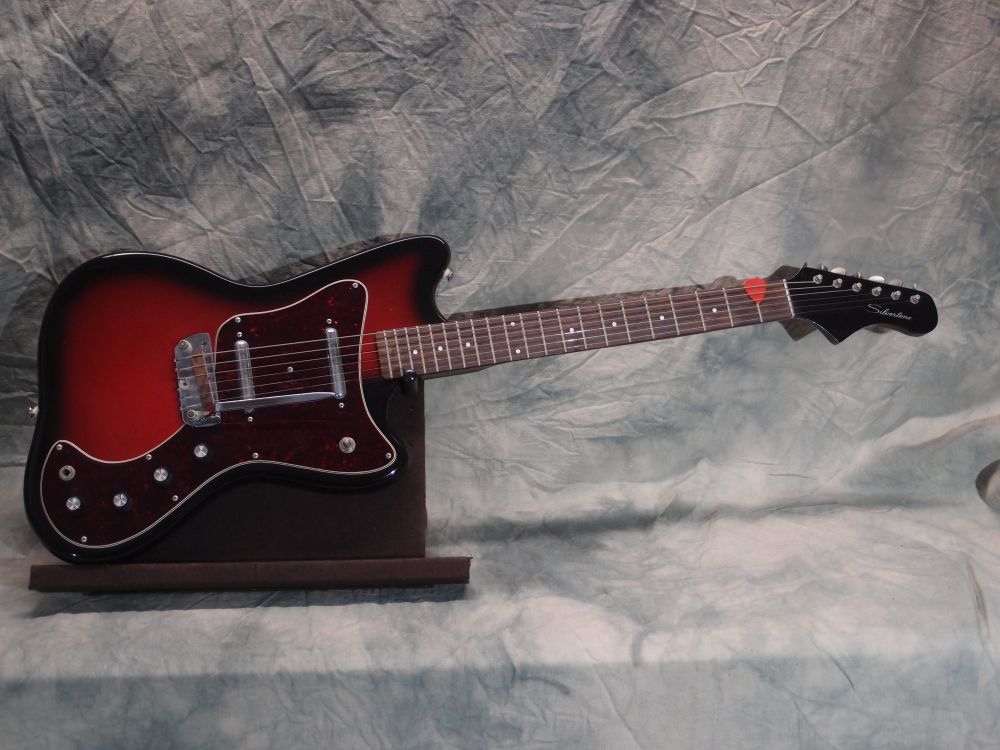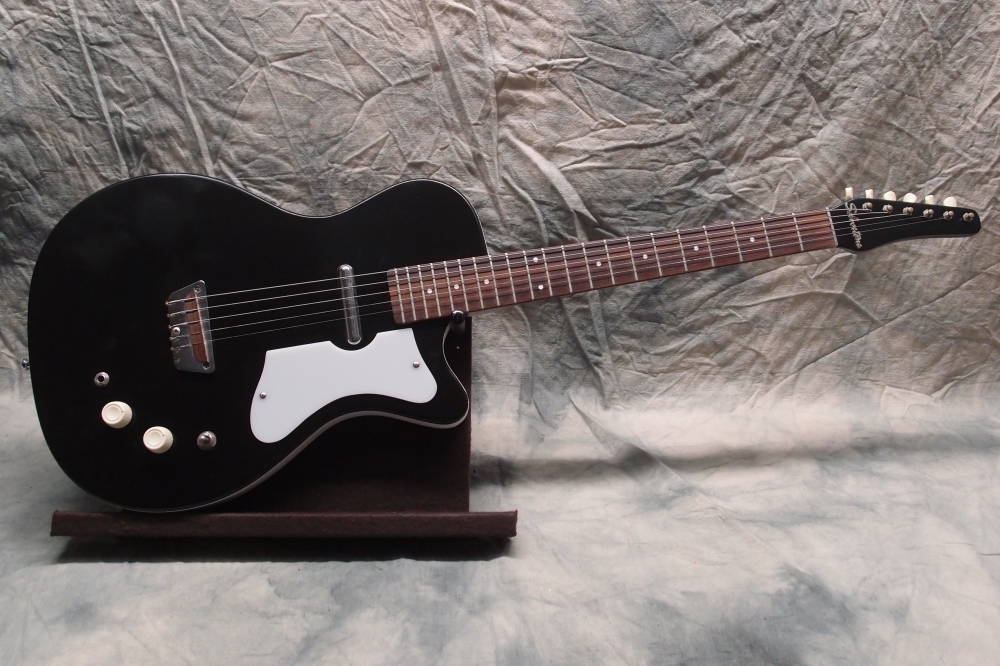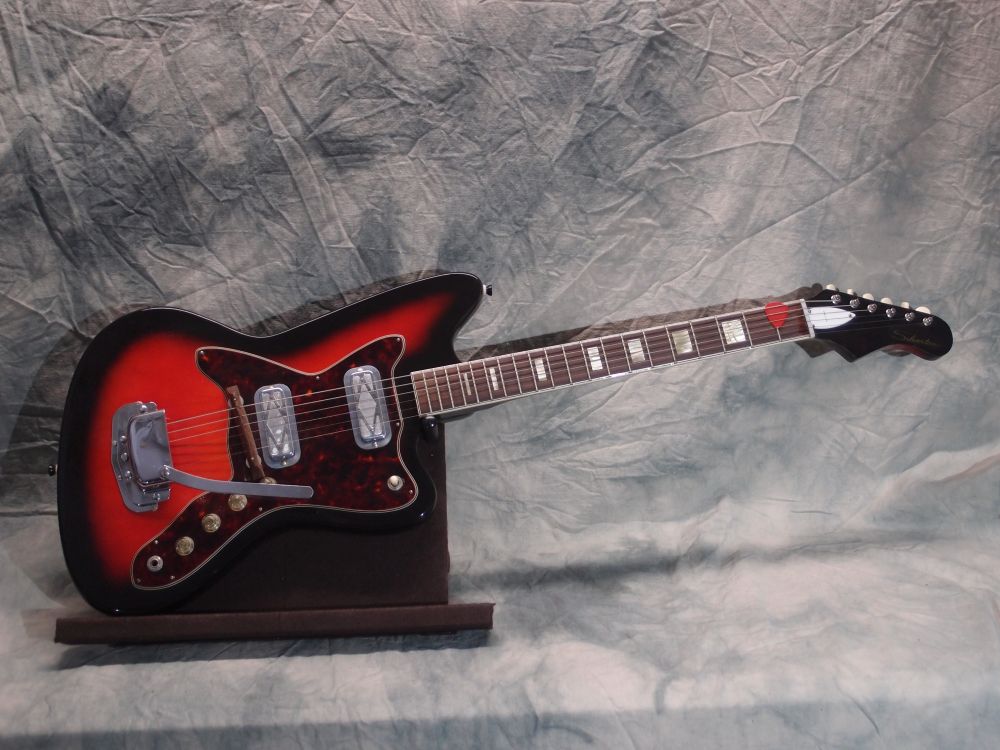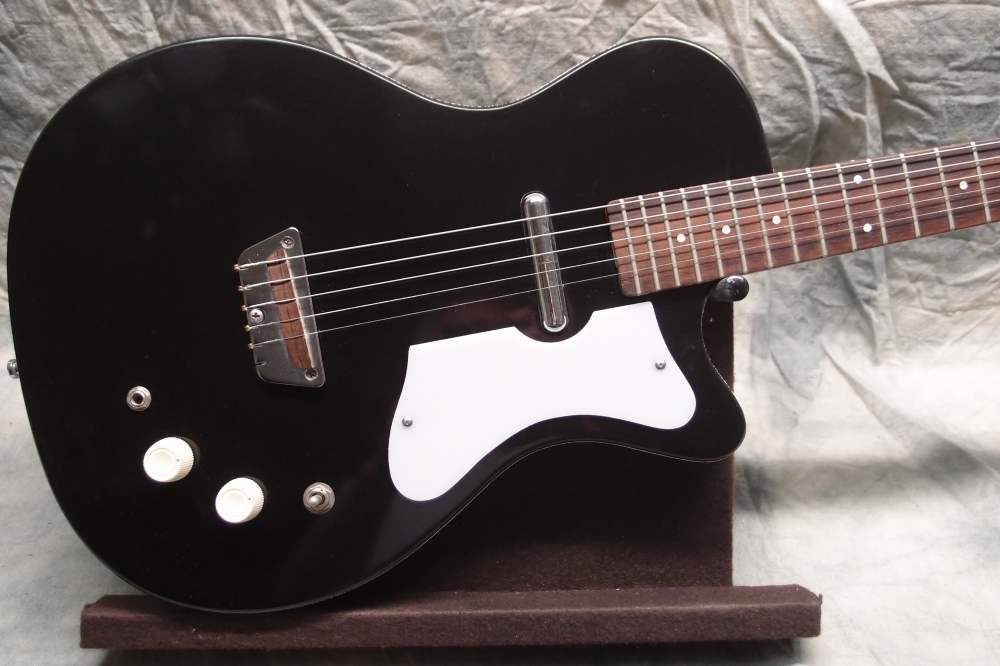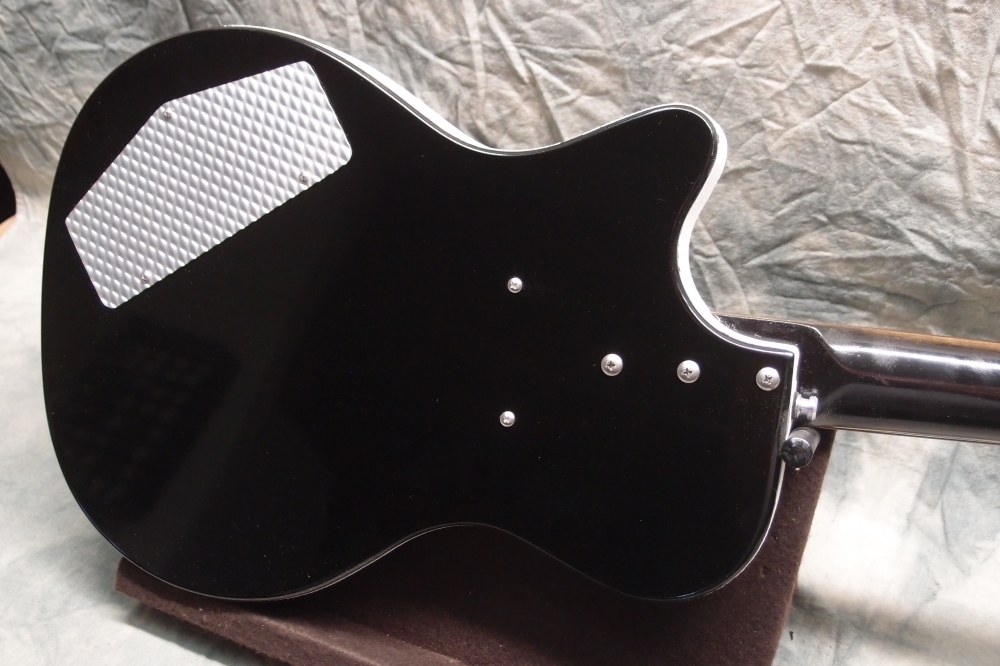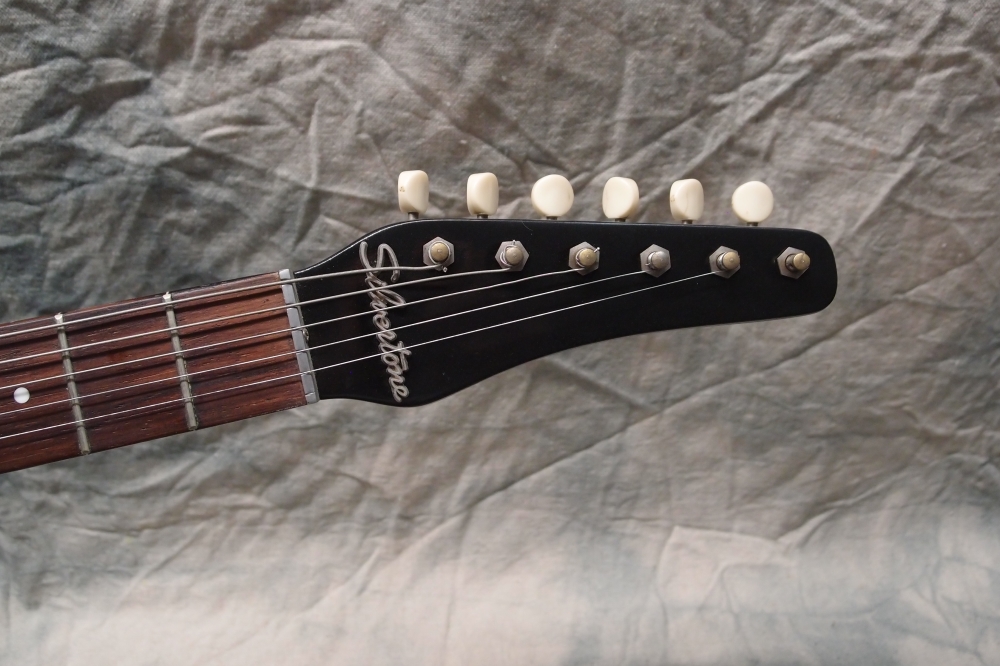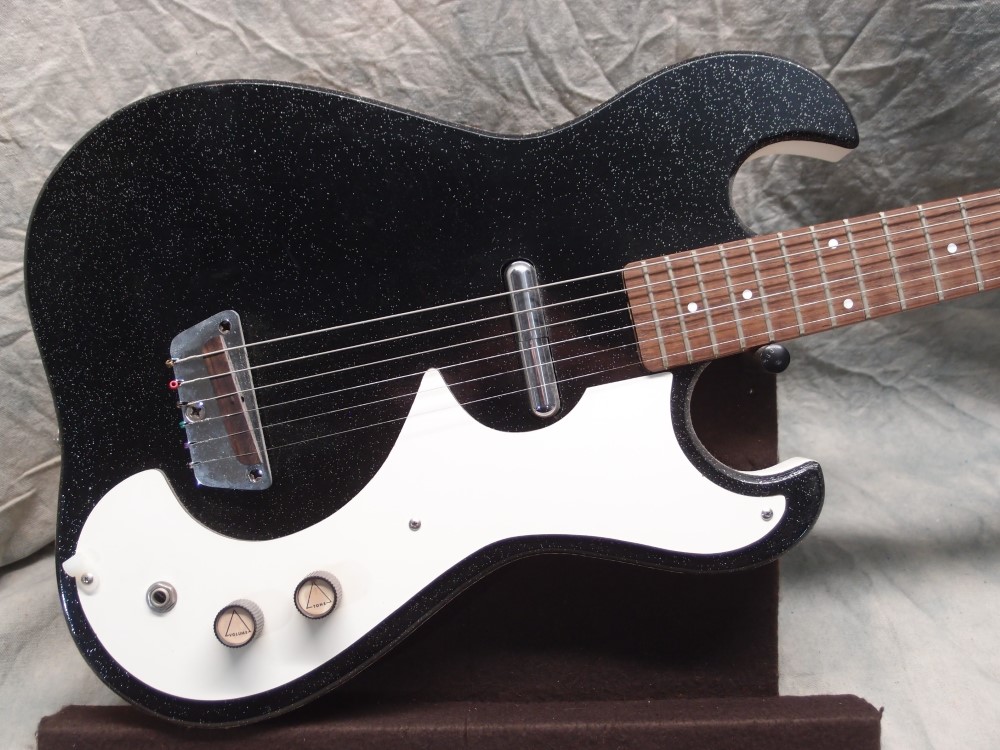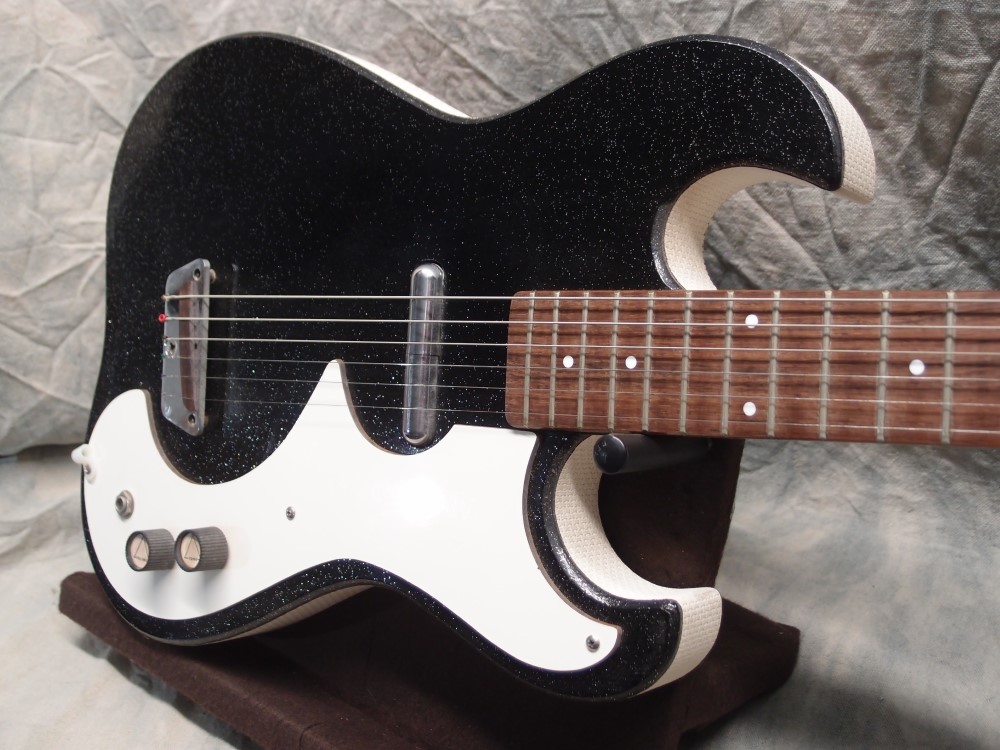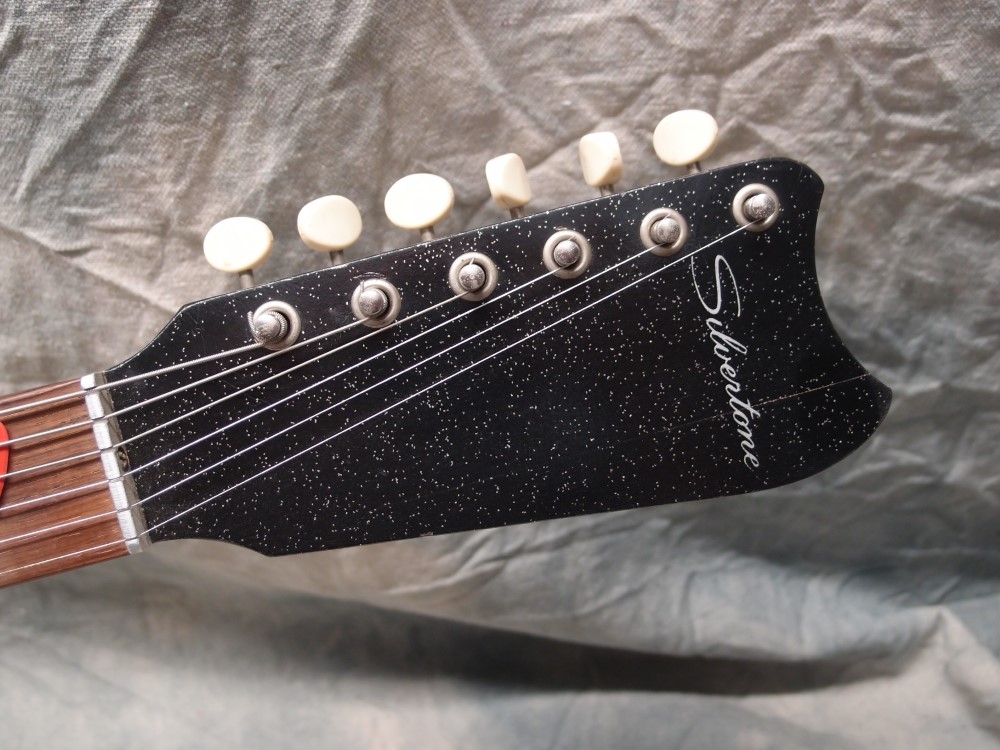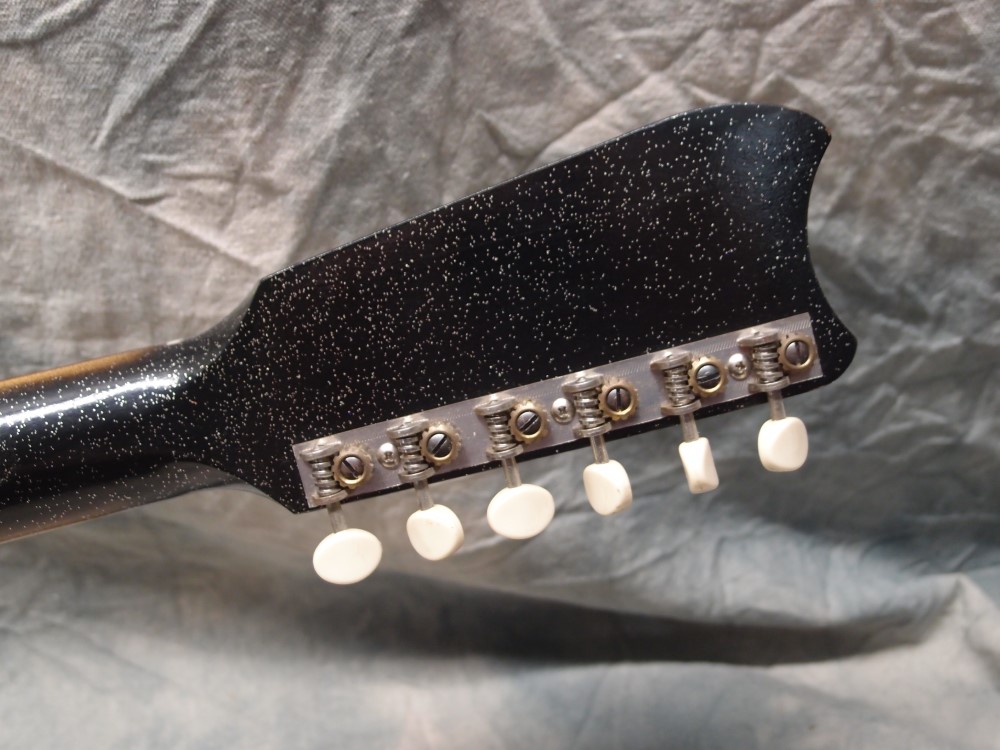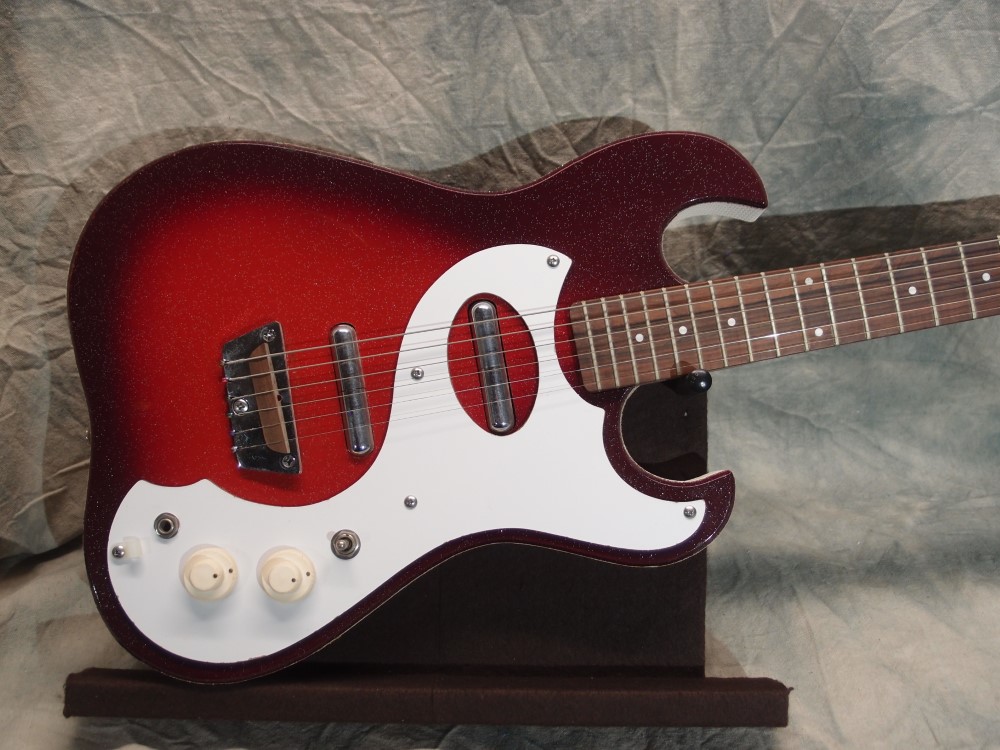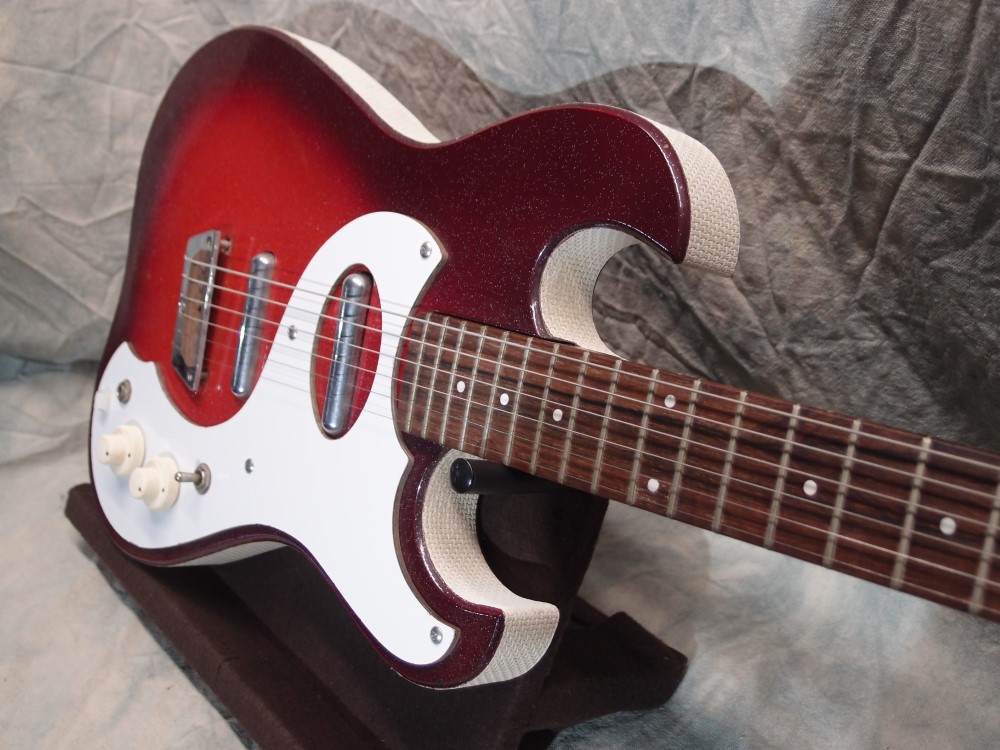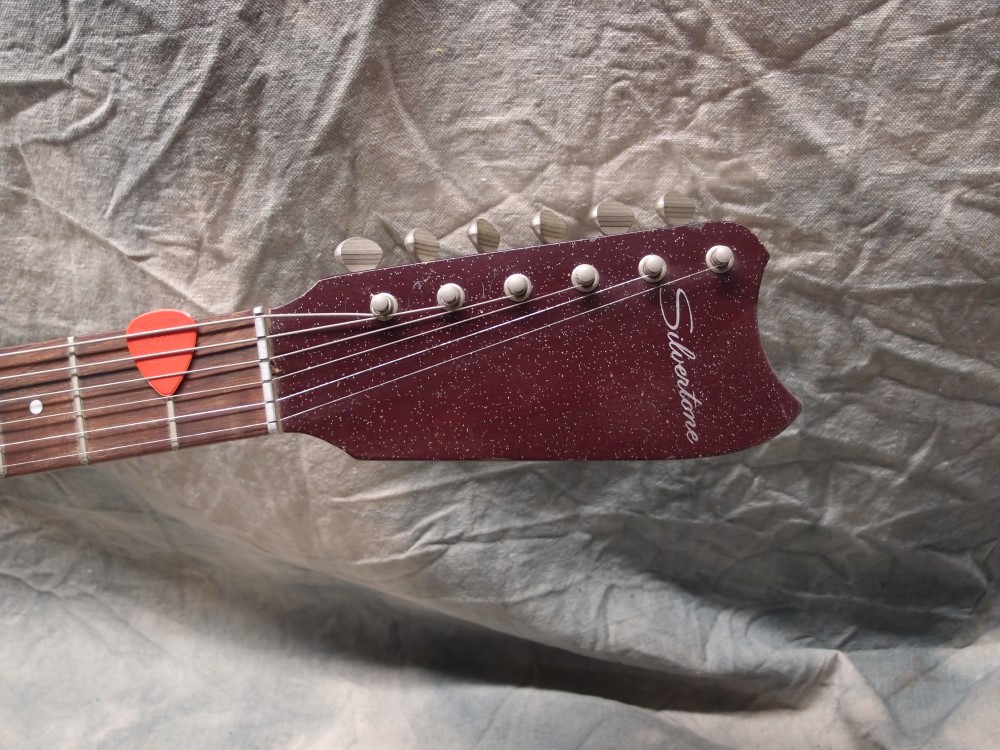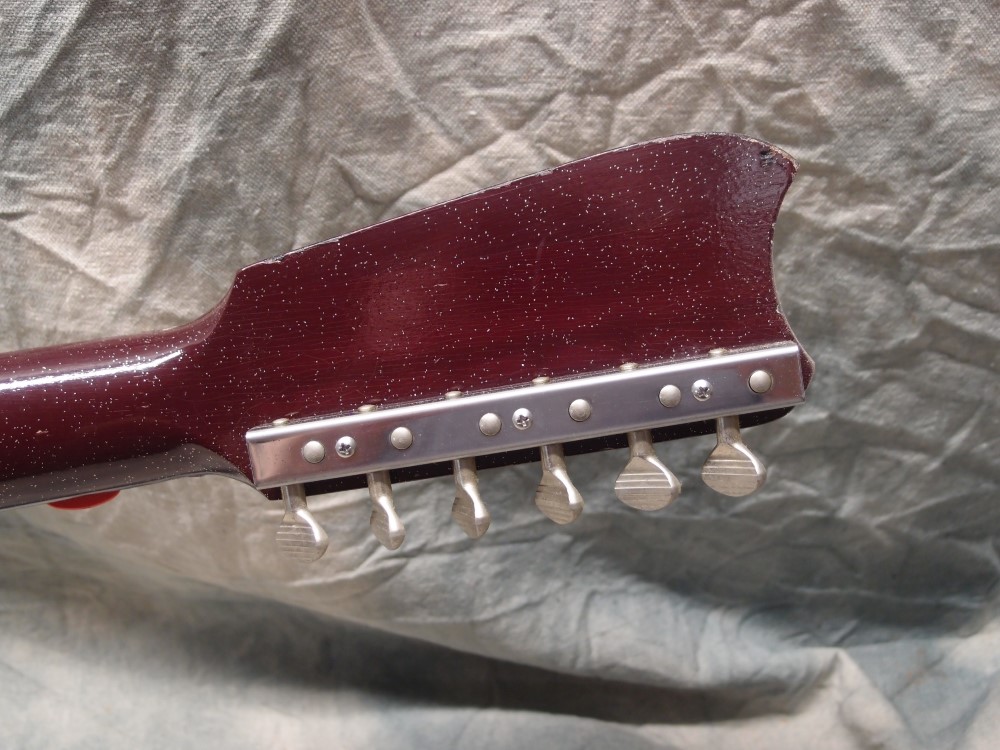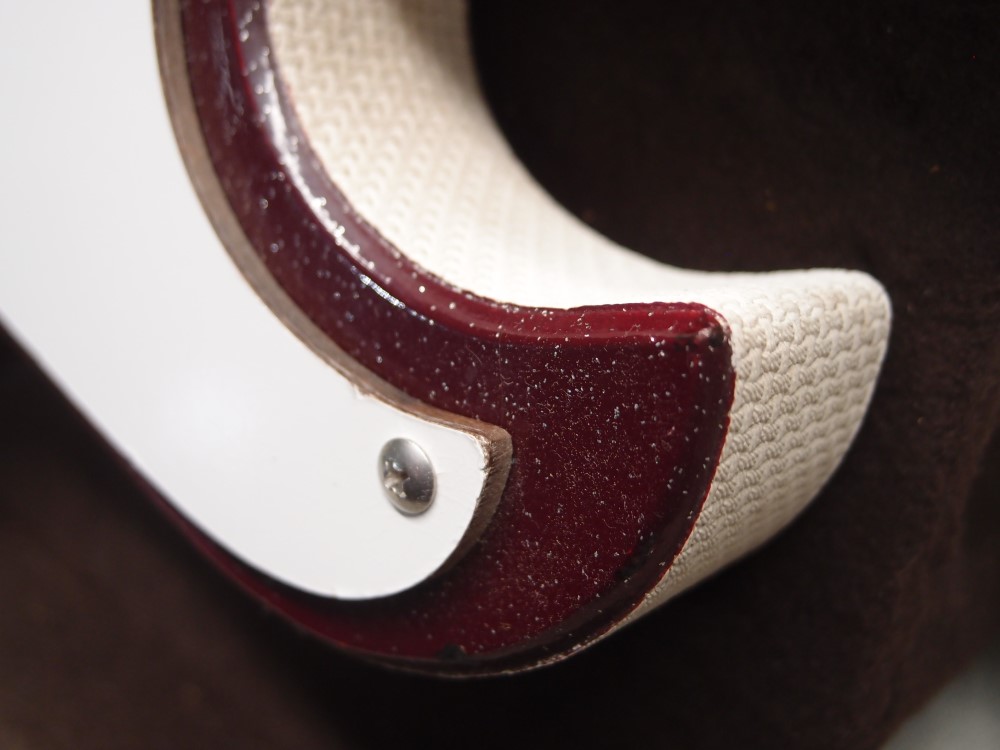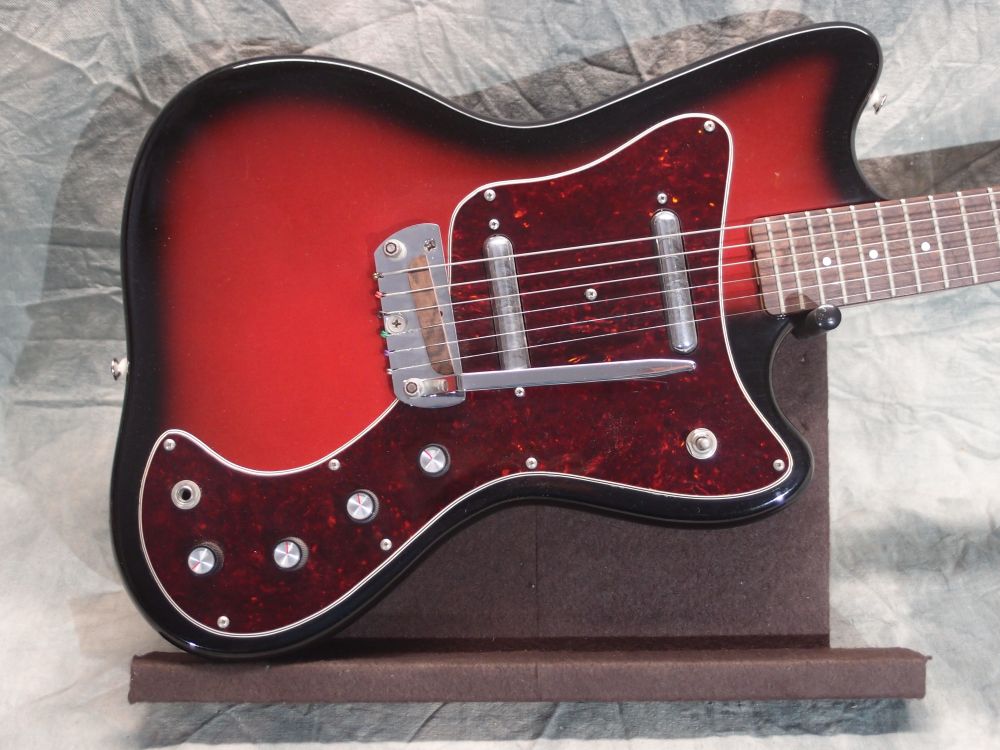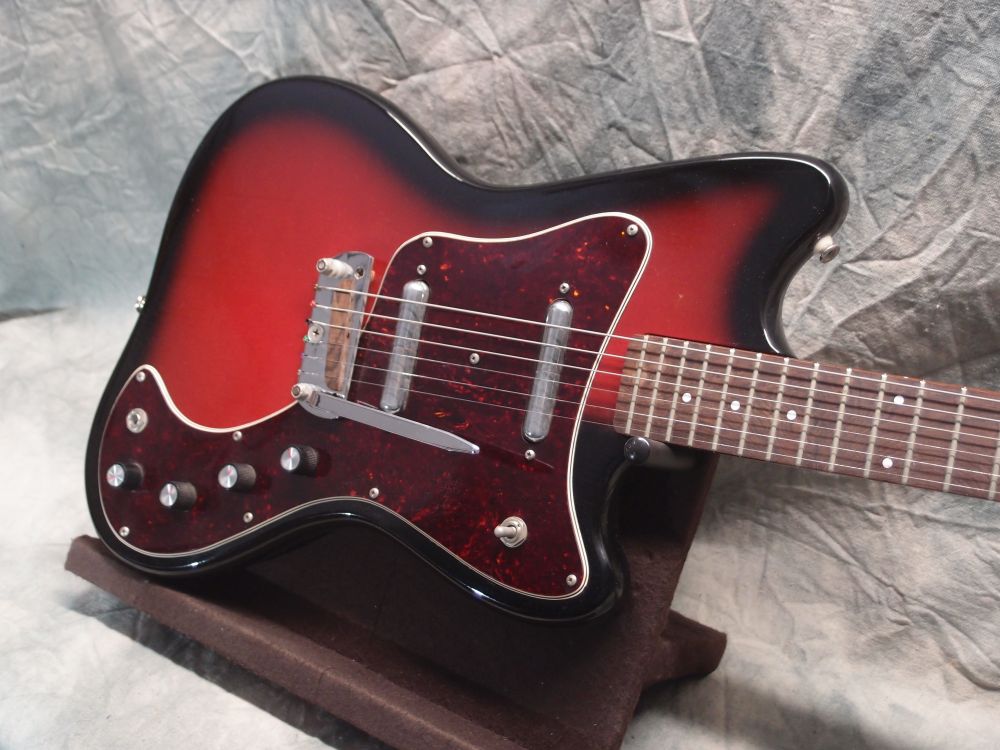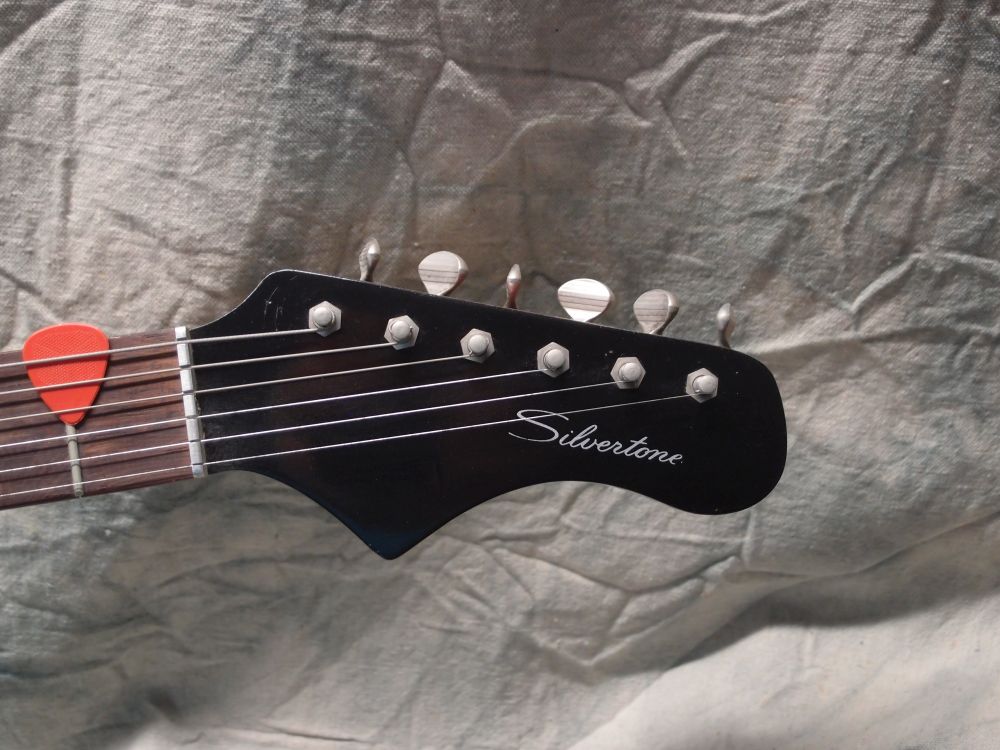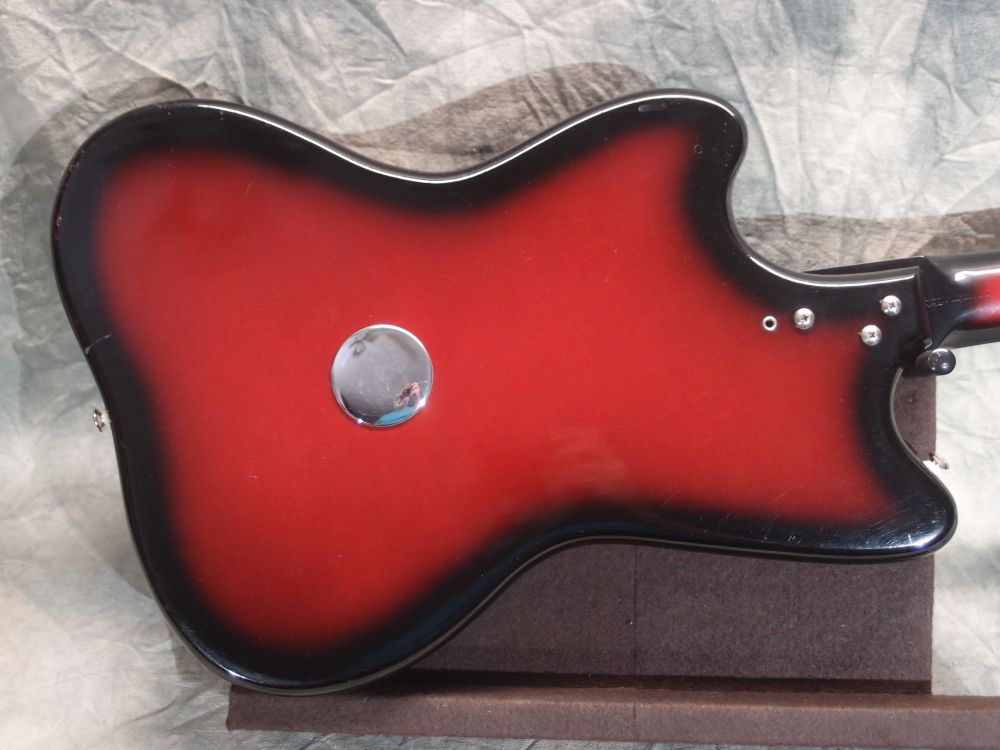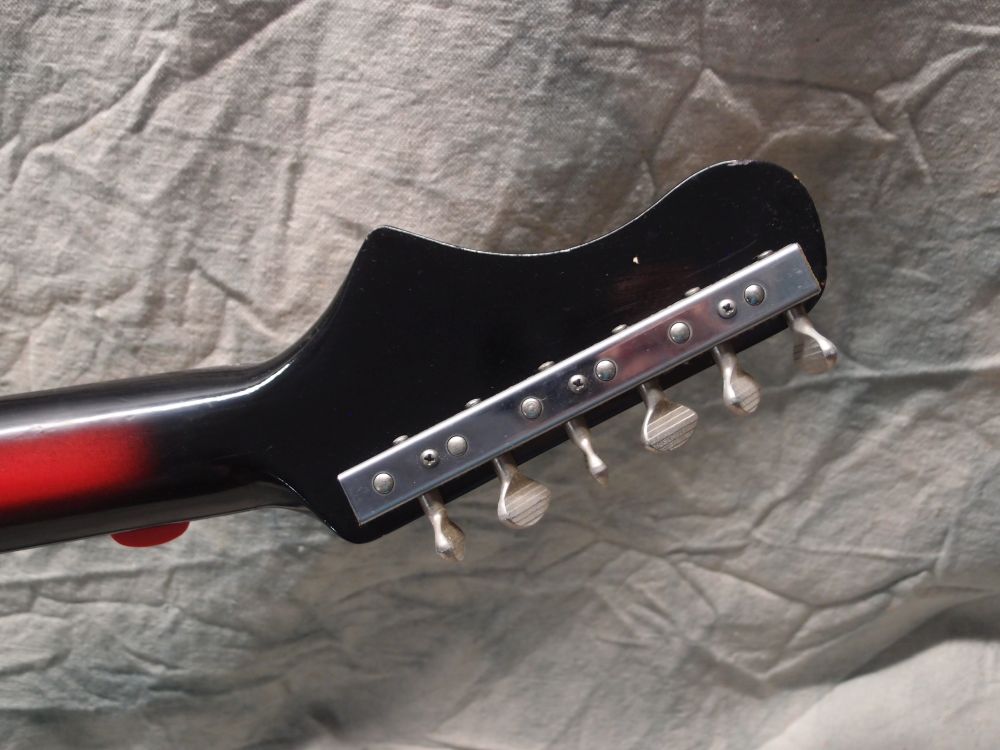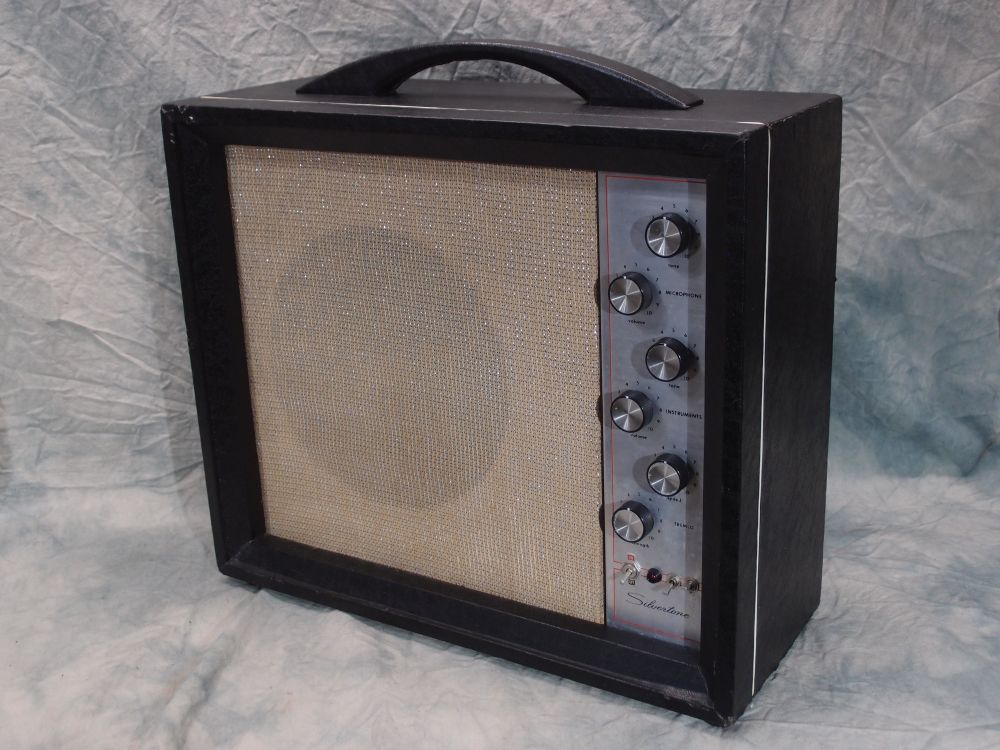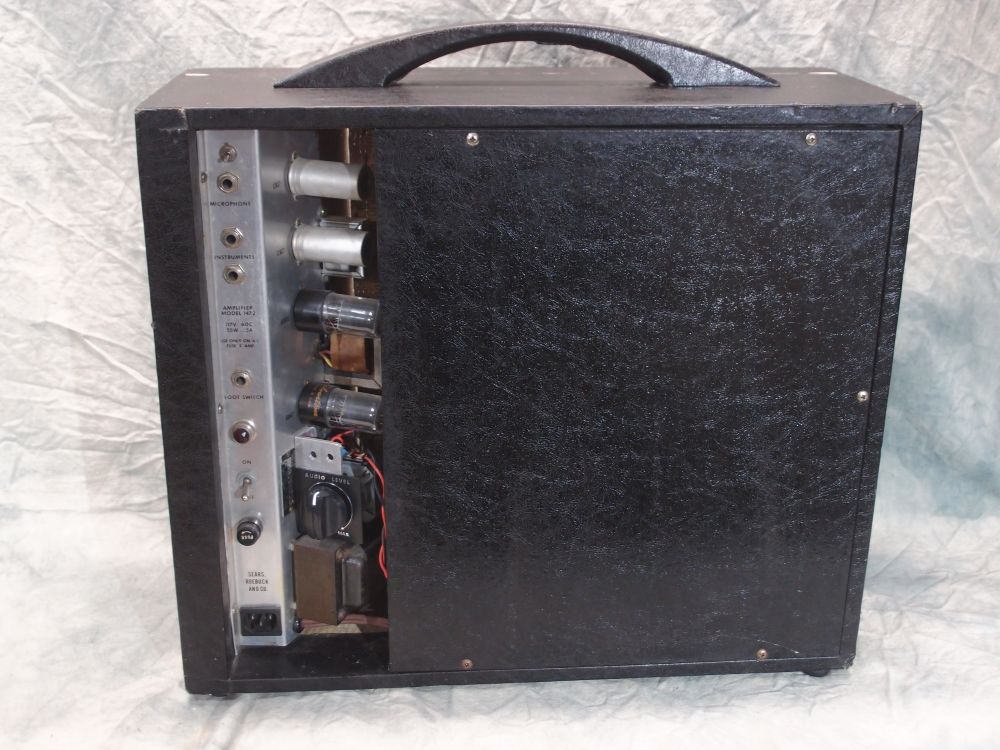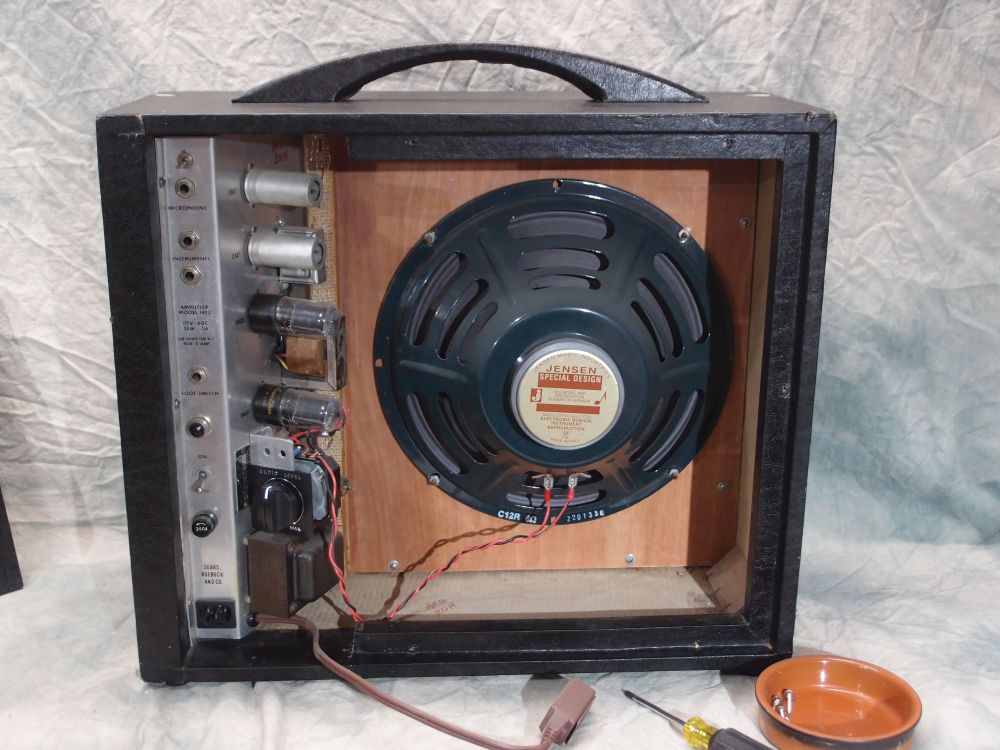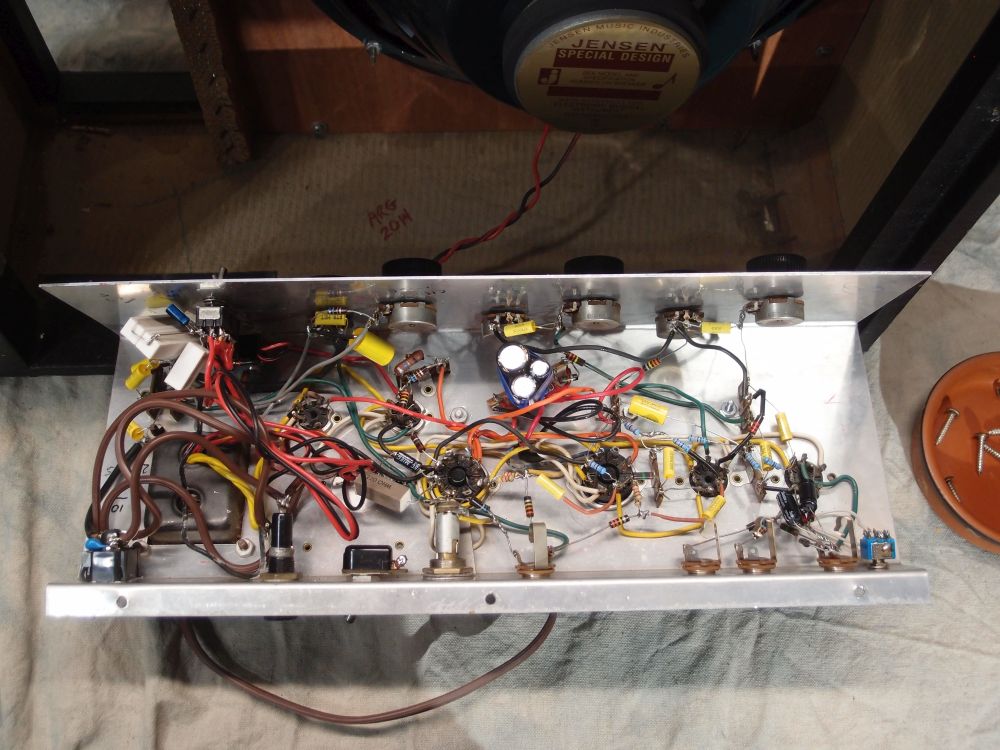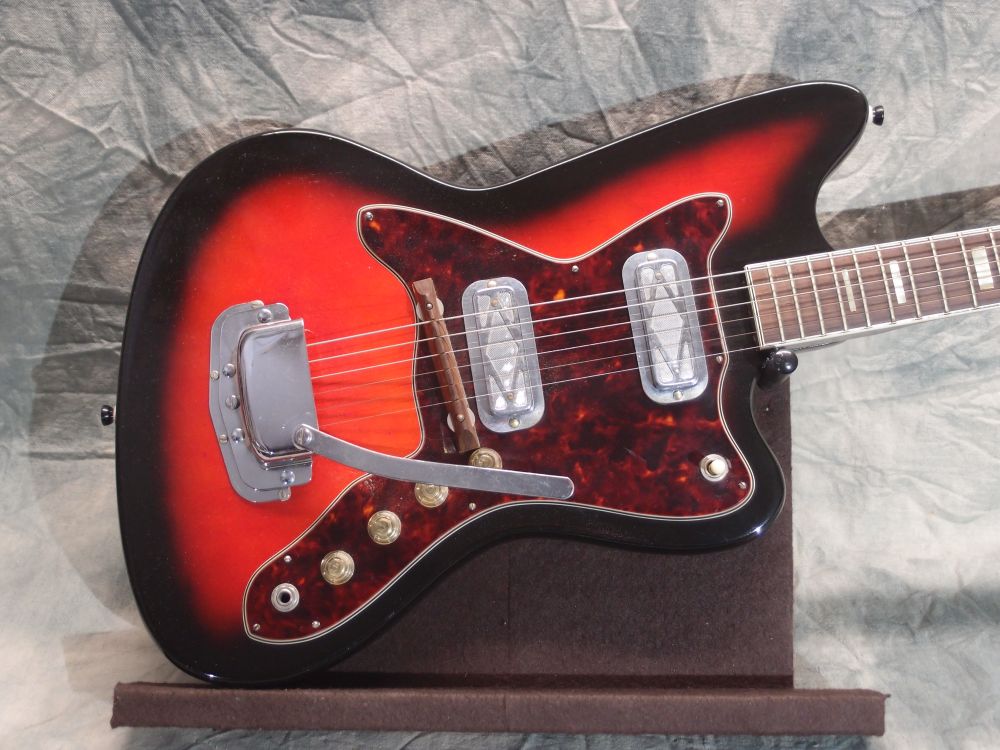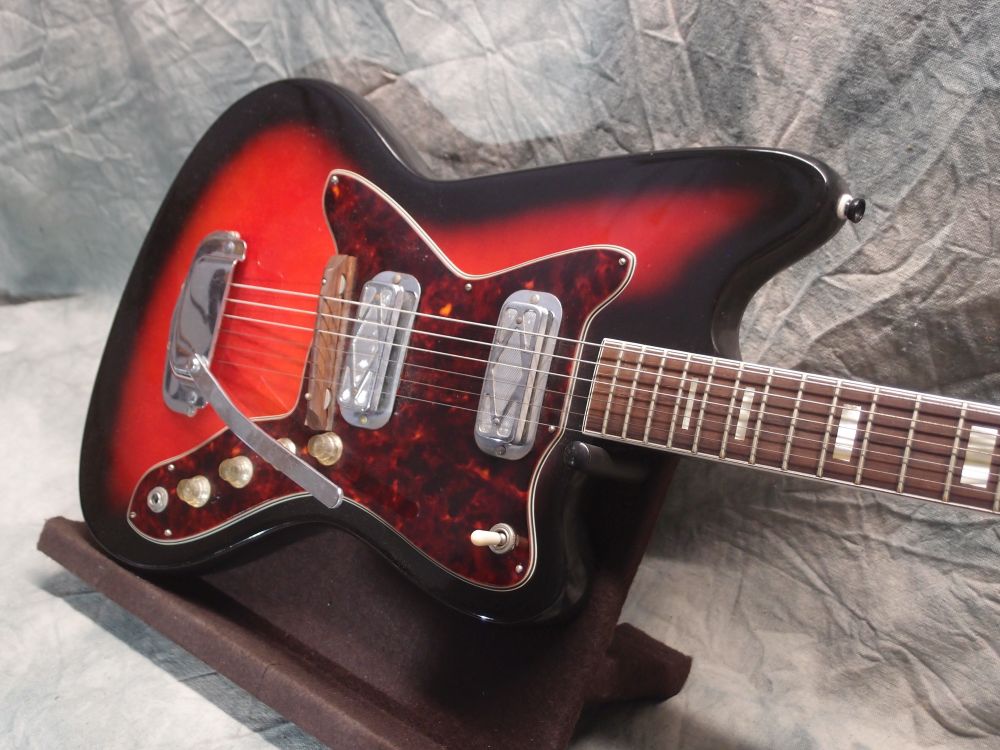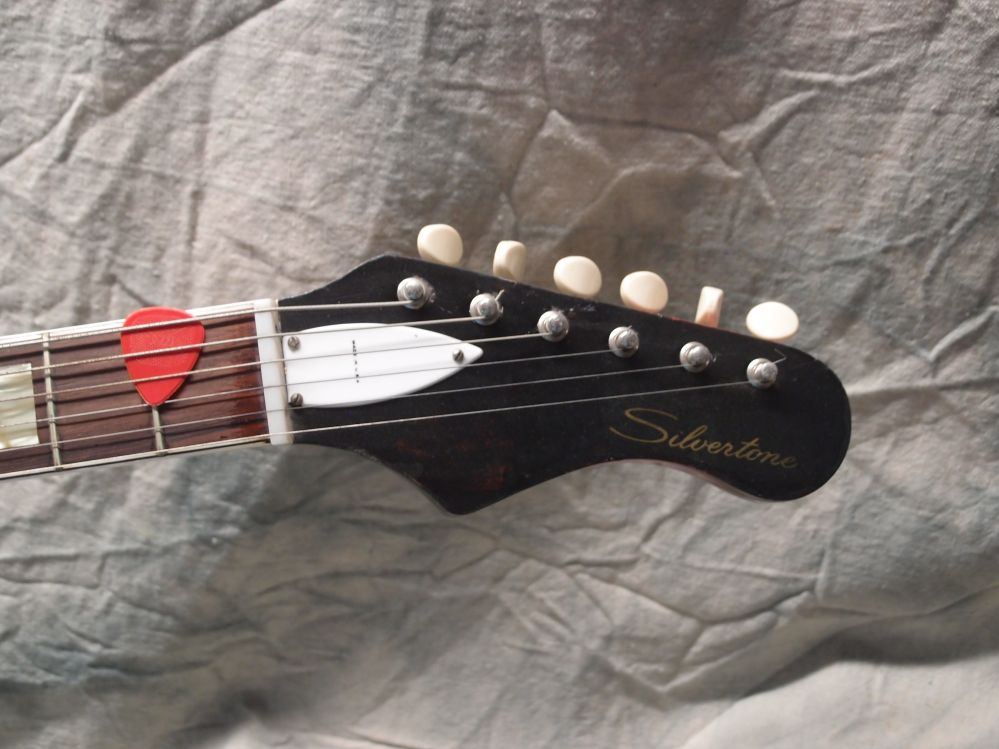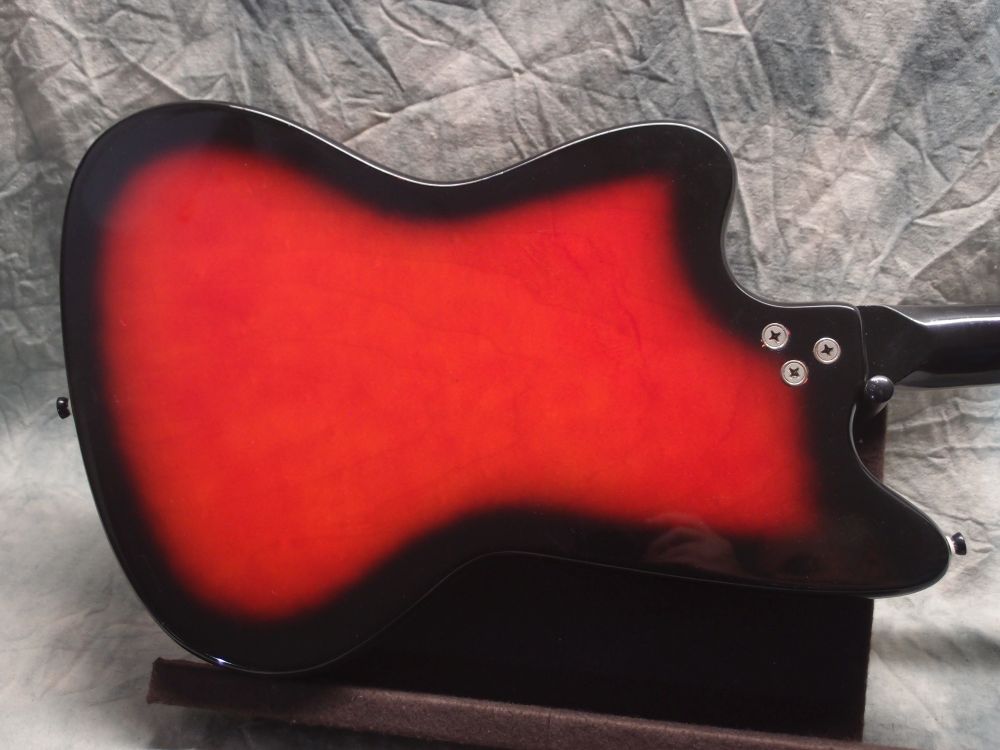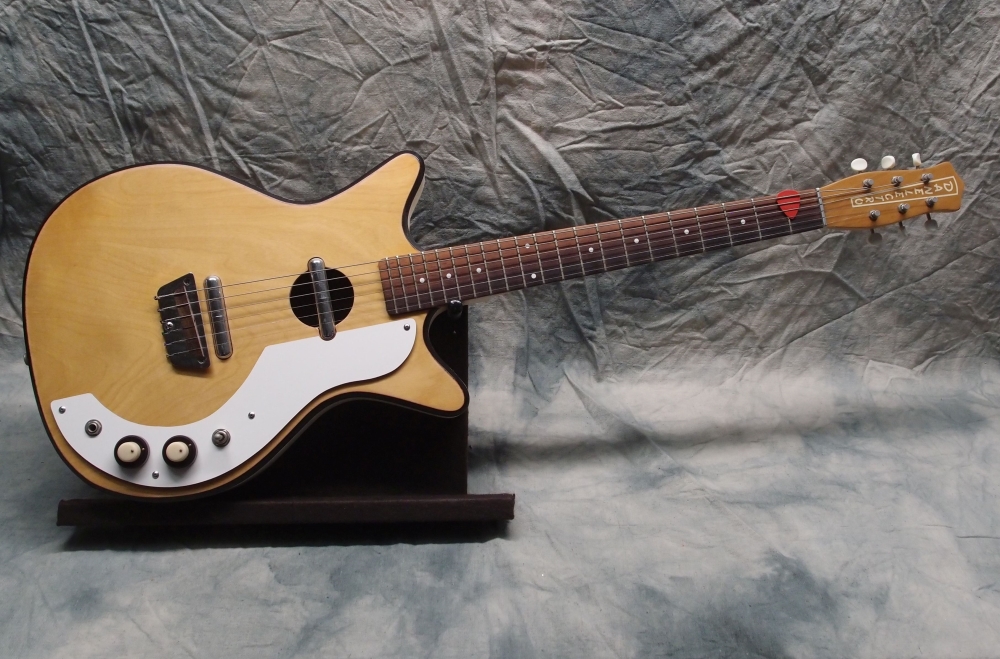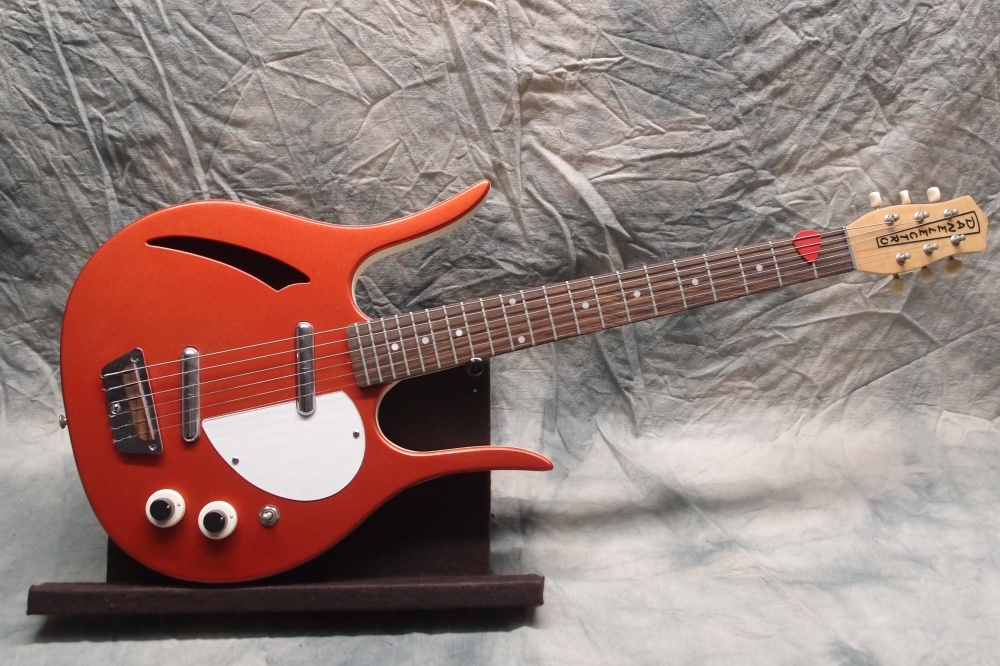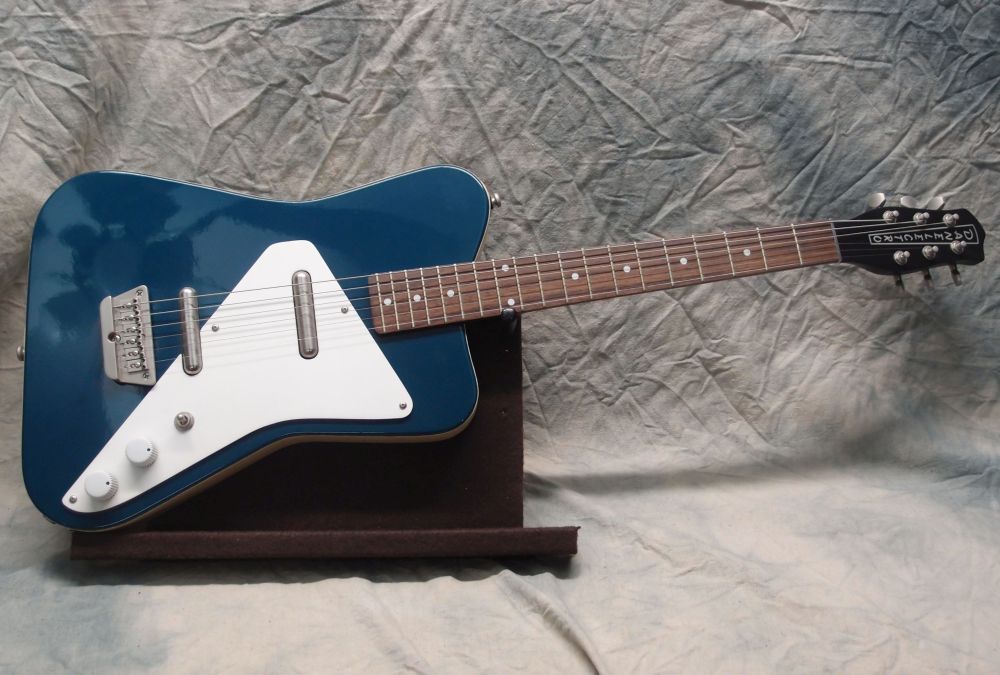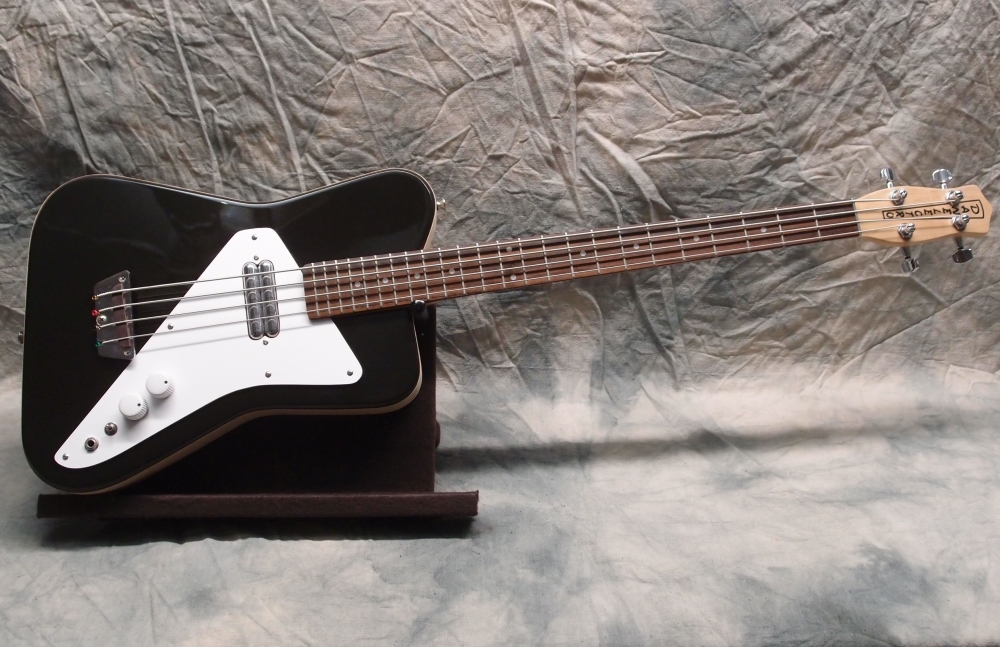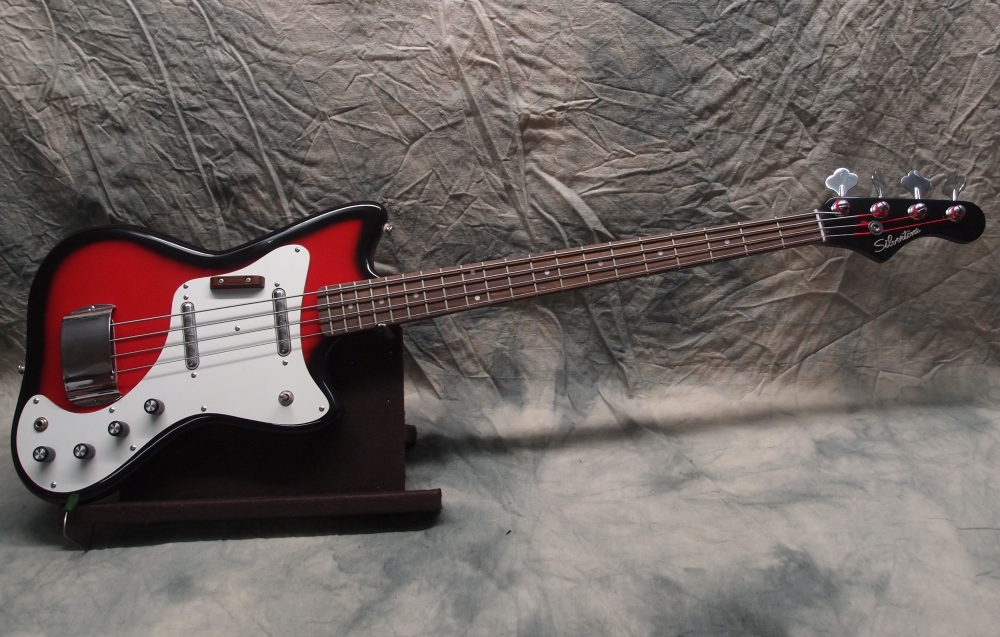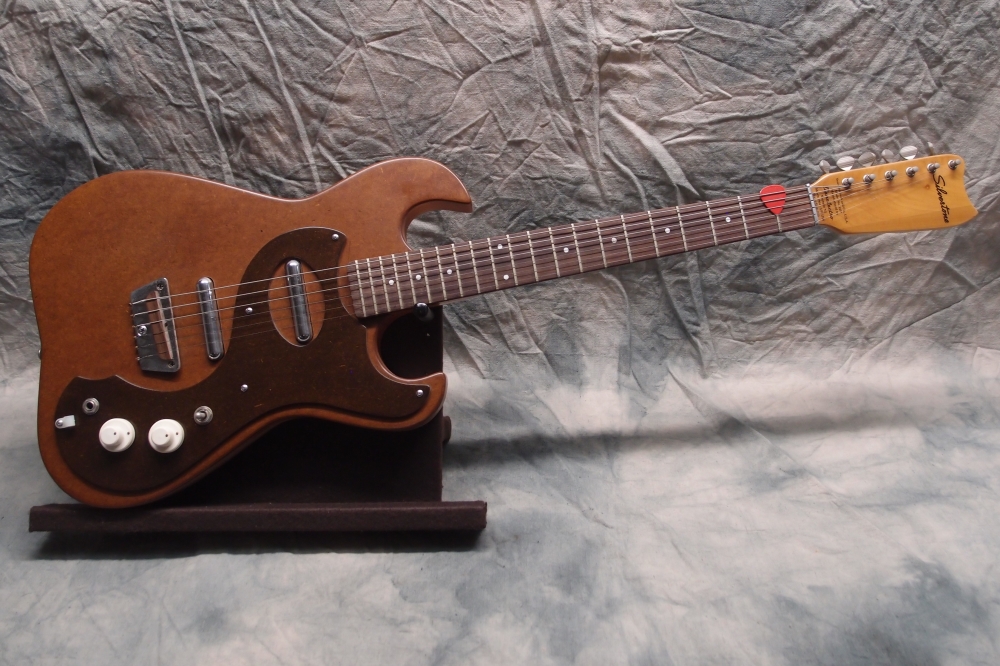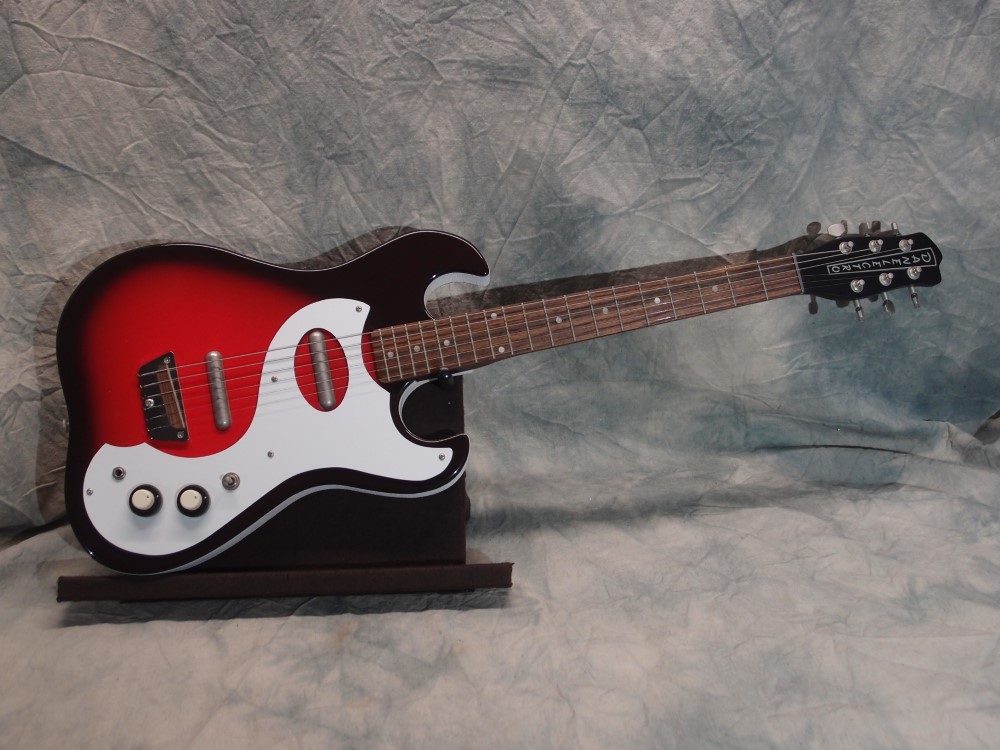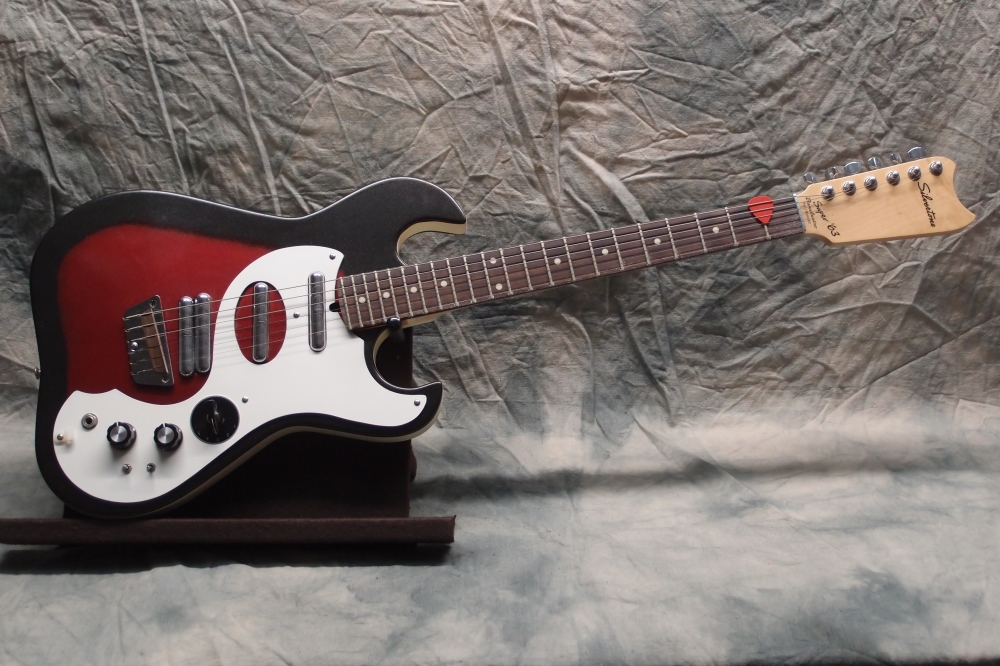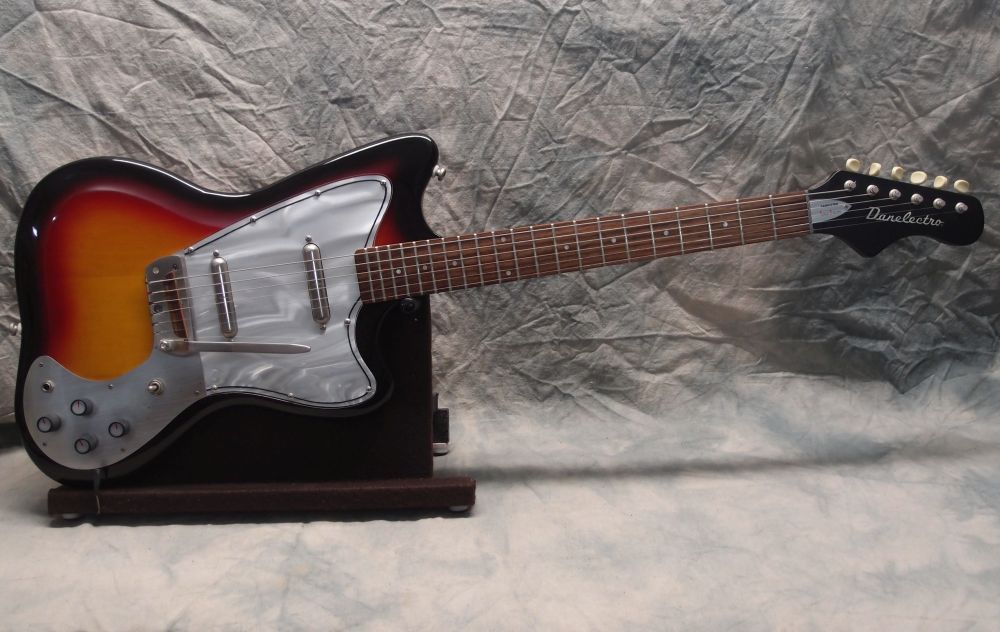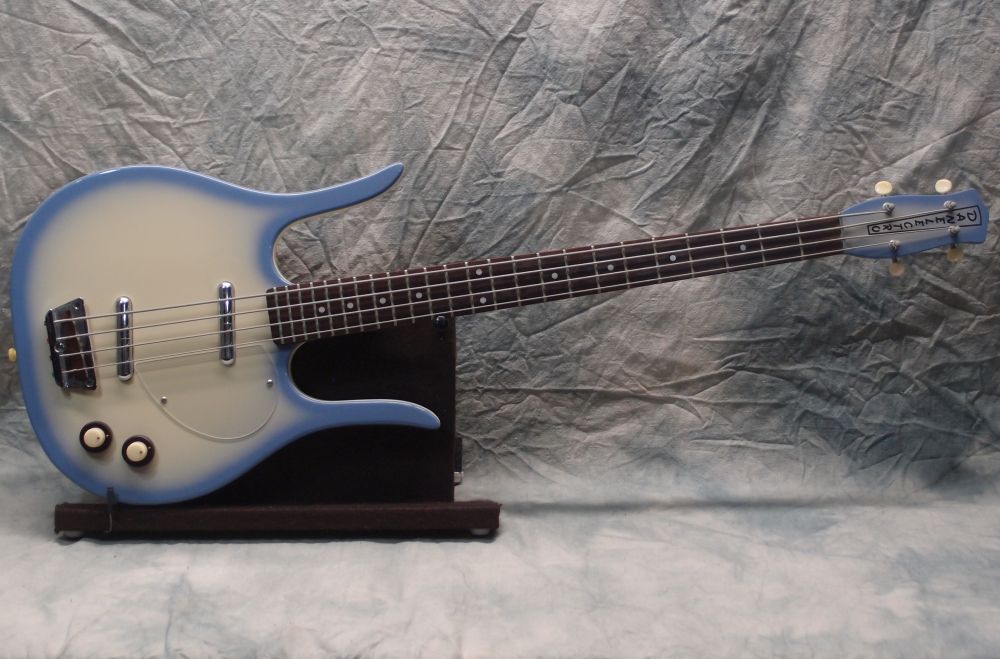This started as a vintage neck that I got on eBay. I built a reproduction body and hunted-down old-style parts to rebuild this as authentically as possible. The finish is black nitro, which is accumulating nitro damage just from existing. Someday I should strip that garbage off and re-shoot it in polyurethane.
More: Silvertone U-1 "Dolphin" Guitar ...
This is another factory guitar, vintage 1960s, made by Danelectro and sold exclusively through Sears. The 1448 was one of the cheapest electric guitars in the Sears catalog, but it came with something special - it's own amplifier built into the hardshell case. There is almost no wear on this guitar, I don't think it was played much.
More: Silvertone 1448 Guitar & Amp ...
This is the big brother to the Silvertone 1448, vintage 1964-67. Construction is basically the same, but with a full-scale neck, two pickups, and a much better amp. For a lot of details, see the 1448 page. This guitar is in excellent condition for being almost sixty years old, and apart from cleaning and re-stringing, it needed nothing.
More: Silvertone 1457 Guitar & Amp ...
The Silvertone 1450 is a relatively rare model from 1965 to 1967. It is identical to the much more common 1452 "Amp-in-Case" model, except that the 1450 has a three-ply tortoiseshell pickguard in place of 1452's white masonite, and the 1450 did not come with an amp. The three-bolt neck attachment indicates that this is a fairly early example. There should be a date stamp inside the neck pocket, but I don't want to take it apart. For a long time I thought this was a 1452, I was quite pleased to discover while writing this that it is actually the more deluxe 1450.
More: Silvertone 1450 Guitar ...
After successful and interesting experiments rebuilding 1448 and 1457 "Amp-in-Case" amplifiers, I thought I'd try something bigger. So I kept an eye on the eBays, and eventually came up with this - an early production Silvertone 1472, made by Danelectro and sold through the Sears catalog. It was fairly cheap because it wasn't working. However, the cabinet is solid, the aluminum faceplate and labeling are in good shape, all the knobs are there, and everything else can be replaced or rebuilt. The Tolex is in very good shape, and the corners of the cabinet are all pretty much intact. Much like buying an old car - a blown engine is easier to fix than a rusted-out body.
More: Silvertone 1472 Amplifier ...
This is a Harmony-made Sears Silvertone 1478. This body style was originally called the "Silhouette", and Harmony sold similar models under their own name. Later it became known as the "Bobkat". I can't find a serial number anywhere, and I'm not taking it apart to look for one, so I don't know the exact age of this guitar.
More: Silvertone 1478 Guitar ...
Danelectro Companion Guitar
Danelectro Longhorn Guitar
Danelectro Pro-1 Guitar
Danelectro Pro-1 Bass
Danelectro Silvertone 1443 Bass
Danelectro Silvertone U-1 Guitar
Danelectro Silvertone 1448 Guitar
Danelectro Silvertone 1457 Rescue Guitar
Danelectro Silvertone 1457 Guitar
Danelectro '63 Guitar
Danelectro "Super-63" Guitar
Danelectro Silvertone 1450 Guitar
Danelectro Silvertone 1472 Amplifier
Danelectro '67 Hornet Guitar
Danelectro Longhorn Bass
Danelectro is my favorite type of guitar, simply for the genius of their unorthodox, inexpensive, yet highly effective designs. I love the tone of old-growth masonite. If you are looking for details, the Pro-1 Bass is the most complete build documentation.
More: Danelectro Projects ...




